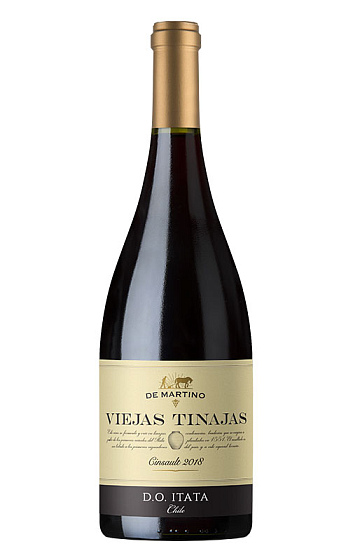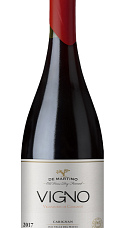De Martino Viejas Tinajas Cinsault 2018
Descripción
Inspirado en los primeros vinos que se elaboraron en Chile, este tinto proviene de un viñedo ubicado a 22 kilómetros del Pacífico y a 450 kilómetros al sur de Santiago, en el pueblo de Guarilihüe. La combinación de suelos montañosos de granito, cepas viejas y una vinificación que incluyó la maceración carbónica y el envejecimiento en tinajas de más de 100 años, como indica su nombre, alumbra un expresivo monovarietal de Cinsault de gran pureza y frescura. A juicio de The Wine Advocate, su mejor añada hasta la fecha.
Ficha técnica
Cata
Viñedo y elaboración
Opinión de los críticos
The amphorae-fermented Cinsault sells like hotcakes, so I had to taste an unbottled sample of the 2018 Viejas Tinajas Cinsault, a wine first produced in 2011. 2018 was a cold and rainy year, and they harvested early, as rains complicated matters in mid-March. The wine is 11.7% alcohol and has moderate acidity, a characteristic of the grape. Sourced from dry-farmed vines planted in Guariligüe 33 years ago, the uncrushed grapes ferment in a carbonic maceration way in the terracotta amphorae for 15 days; the wine is kept in the amphorae through the winter and then is bottled unfiltered once malolactic fermentation has completed. This was not bottled in 2017, as the wine was strongly marked by the smoke from the fires that happened that year. The old amphorae seem to be more neutral after a few years, and the wines are not marked like they were in 2011. This is precise, expressive and fresh, with a wild character, very different from the other Cinsaults. It has a brothy, meaty touch on the palate that makes it very tasty. Clean and precise, with very good grip, 2018 has to be the finest vintage to date for this wine. They expect to fill some 12,100 bottles in September 2018.
This is a beautiful wine that shows fresh raspberries, citrus, herbs and hints of terracotta and iron. Medium-bodied with a lovely, steely texture, presented by medium-chewy tannins and loads of fresh red fruit. Purity is the calling card here. Drink now.






Uno de los vinos con más personalidad que he probado últimamente